How it works
The Die-Cutting Process
- Outline shapes of products of all types
- Processing method
- Die-cutting in a two-up system
- Die-cutting with counter-pressure -
see product information 'Die-cutting with counter-pressure' - Banding of die-cut products -
see product information 'Banding of die-cut products' - Material and types of die-cutting
Processing method
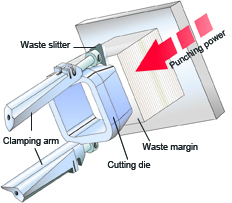
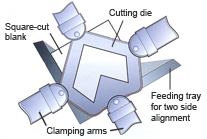
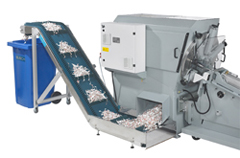
Our ram die-cutters work by pushing the material through the die to create the desired shape. Square-cut stacks of printed material are placed in the feeding tray, between the cutting die and the ram. The die is manufactured by die makers according to the desired shape.
The one-way system ensures low tolerance, as the material is inserted directly in front of the die - protected by safeguarding systems.
The operator determines the working speed, as the machines are not controlled by a fixed rhythm. Once the material is inserted and aligned the die-cutting stroke is released; idle strokes are thus avoided.
The size of the finished article from 10 x 10 mm up to 330 x 380 mm and the required output will determine the machine model.
The small waste margin of 0-3 mm ensures economical production. The waste margin is removed with the aid of waste slitters, which can be inserted at any required point. The waste falls down through the machine; it cannot pile up.
A waste conveyor is available as an option to be installed directly on the die-cutter to convey the waste into containers
The material can be zero-punched, where the whole stack is die-cut, or alternatively a small quantity of material can be left in front of the die and is cut with the next stroke. This gives a longer die life. A soft PP-backing plate on the ram protects the edge of the die when zero-punching or when cutting in a two-up system.
The die-cutting stroke is released by light barriers or by controlled protection doors - depending on the model.
An aluminium die positioning block is supplied enabling the operator to set up each job off-line. The die is fixed on the block after which the mounted block is positioned into the feeding tray of the machine. The clamping arms can then be fastened easily on the die. Additional fine adjusting devices on the machine are used for readjustments - also during production. A small suitable tool set is fixed at the operator's side.
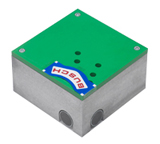
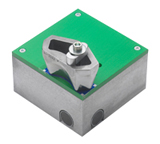
A newly designed device, fitted to the punching ram of the die-cutter, carries out the bevelled edge cut of a right angled standard note pad or sticky note pad. The bevelled edge may be straight or formed. The integrated pneumatics tightens and turns the pad before the cutting stroke. The ancillary device is available for each new BUSCH die cutter (except A series machines) and offers a wide range of formats and angles.
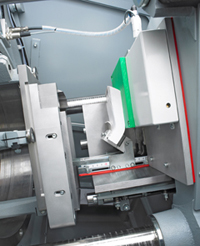
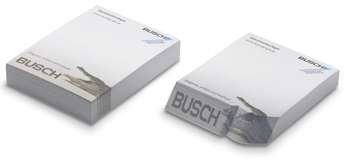

Cutting dies for individual shapes
are supplied by die makers.
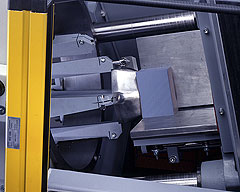

 To the showroom
To the showroom